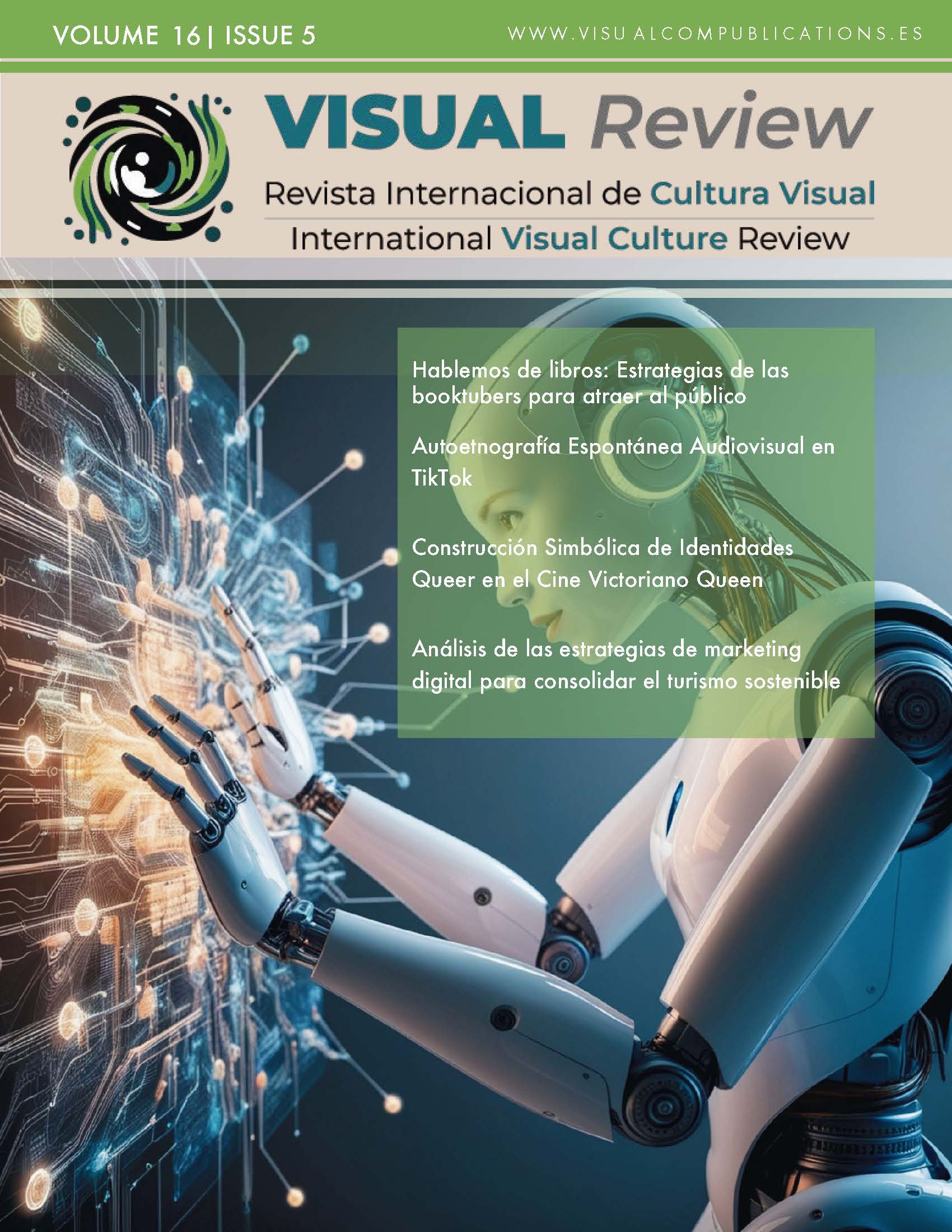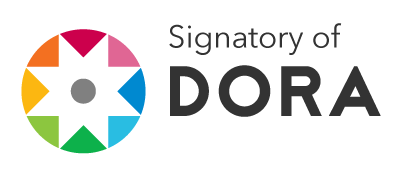Impact of Audiovisual Content Consumption on the Self-Esteem of University Students
DOI:
https://doi.org/10.62161/revvisual.v16.5336Keywords:
Consumption of audiovisual media, Digital content, Educational intervention, Student self-esteem, Social networksAbstract
Audiovisual content, including movies, series, and social networking videos, play a crucial role in the personal and social development of college students, underscoring the importance of understanding their impact on student well-being. This study aimed to identify trends that contribute to the development of educational strategies and guidelines that improve the psychological health of the student community. A sample of 601 students, aged 16 to 27 years, was analyzed using self-esteem and audiovisual media consumption questionnaires. The results reveal that moderate and selective consumption of content, especially movies, is associated with higher self-esteem. On the contrary, excessive consumption and preference for certain contents, such as series, are associated with lower self-esteem. These results underscore the importance of conscious media consumption, urging students to select content that promotes their emotional health.
Downloads
Global Statistics ℹ️
|
2100
Views
|
1169
Downloads
|
|
3269
Total
|
|
References
Al-Ghafri, R. K., Al-Badi, A. H., & Al-Ghafri, K. (2016). Users' Activities on Social Media as indicators of Self-Esteem: a Case Study in Oman. Journal of Internet Social Networking & Virtual Communities, 2016. https://doi.org/10.5171/2016.747714. https://doi.org/10.5171/2016.747714.
Alburqueque, I. L. V., Romaní, Y. L. H., Yupanqui, G. M. C., Abollaneda, R. C., & Aedo, M. I. R. (2022). Improvisation of Music Therapy with Repertoire of Marineras Trujillanas in Online Higher Education Learning. International Journal of Emerging Technologies in Learning, 17(15), 171-187. https://doi.org/10.3991/ijet.v17i15.31843. https://doi.org/10.3991/ijet.v17i15.31843. DOI: https://doi.org/10.3991/ijet.v17i15.31843
Almansour, A. M. (2023). Self-esteem among nursing students at a public university in Saudi Arabia: A cross-sectional study. Belitung Nursing Journal, 9(4), 377-383. https://doi.org/10.33546/bnj.2750. DOI: https://doi.org/10.33546/bnj.2750
Alsunni, A. A., & Latif, R. (2022). Internet gaming disorder and its correlates among university students, Saudi Arabia. Journal of Family and Community Medicine, 29(3), 217-222. https://doi.org/10.4103/jfcm.jfcm_129_22 DOI: https://doi.org/10.4103/jfcm.jfcm_129_22
Angulo Quiñonez, A. Á. (2022). Self-esteem, its relationship with academic performance and university dropout. Sapienza: International Journal of Interdisciplinary Studies, 3(6), 211-225. https://doi.org/10.51798/sijis.v3i6.514 DOI: https://doi.org/10.51798/sijis.v3i6.514
Arroyo, A. R. G. (2023). Audiovisual Content As a Marketing Strategy. Branded Content. VISUAL Review. International Visual Culture Review / Revista Internacional de Cultura , 10. https://doi.org/10.37467/revvisual.v10.4628 DOI: https://doi.org/10.37467/revvisual.v10.4628
Başkaya, O., Baykan, H., & Can, M. Ş. (2023). The Relationship between Social Achievement Goals and Self-Esteem, Depression and Anxiety among Medical School Students. Nigerian Journal of Clinical Practice, 26(9), 1335-1341. https://doi.org/10.4103/njcp.njcp_69_23. DOI: https://doi.org/10.4103/njcp.njcp_69_23
Espinal-Monsalve, N. E., Ramos-Ramírez, A. D., Balbín-Espinal, I. C., & Echavarría-Carvajal, J. (2019). Film consumption in Colombia: estimating its determinants. Society and Economics, 39. https://doi.org/10.25100/sye.v0i39.7200 DOI: https://doi.org/10.25100/sye.v0i39.7200
Forniés, G. C., & Juliá-Sanchis, R. (2023). Influence ofsocial networks on the self-esteem, body image andbody satisfaction ofadolescents and young persons. Metas de Enfermeria, 26(2), 58-69. https://doi.org/10.35667/MetasEnf.2023.26.1003082058 DOI: https://doi.org/10.35667/MetasEnf.2023.26.1003082058
Infante Jaras, M. (2017). Creative experiences in the use of the audiovisual medium and subject trajectories. Literature and Linguistics, 35, 235-250. DOI: https://doi.org/10.4067/S0716-58112017000100235
Krupa-Kotara, K., Markowski, J., Gdańska, A., Grajek, M., Działach, E., Szlachta, G., & Rozmiarek, M. (2023). Global Self-Esteem, Body Composition, and Physical Activity in Polish University Students. Nutrients, 15(18). https://doi.org/10.3390/nu15183907. DOI: https://doi.org/10.3390/nu15183907
Makhlouf Akl, A., & Iñigo Dehud, L. S. (2022). Importance of Visual Language in Educational Videos. VISUAL REVIEW. International Visual Culture Review / Revista Internacional de Cultura Visual, 12(3), 1-19. https://doi.org/10.37467/revvisual.v9.3742. DOI: https://doi.org/10.37467/revvisual.v9.3742
Martín-Romo, L. A., & Belinchón, C. S. (2022). The audiovisual proposal as a reflection of the influence of social networks on young people. Nerve's case. VISUAL Review. International Visual Culture Review / Revista Internacional de Cultura , 9(2016). https://doi.org/10.37467/REVVISUAL.V9.3604 DOI: https://doi.org/10.37467/revvisual.v9.3604
Mayorca-Martínez, Y. G., Valle-Salvatierra, W., Velásquez-Castillo, N. A., Reyna-Márquez, E. E., & Zevallos-Escobar, L. E. (2023). Social Networks, Self-Esteem, Locus of Control, and Academic Performance in University Students From Ayacucho-Peru During the COVID-19 Pandemic. Journal of Higher Education Theory and Practice, 23(15), 209-214. https://doi.org/10.33423/jhetp.v23i15.6435. DOI: https://doi.org/10.33423/jhetp.v23i15.6435
Monteiro, R. P., Coelho, G. L. de H., Hanel, P. H. P., de Medeiros, E. D., & da Silva, P. D. G. (2022). The efficient assessment of self-esteem: proposing the brief rosenberg self-esteem scale. Applied Research in Quality of Life, 17(2), 931-947. DOI: https://doi.org/10.1007/s11482-021-09936-4
Nie, J., Zhang, W., & Liu, Y. (2017). Exploring depression, self-esteem and verbal fluency with different degrees of internet addiction among Chinese college students. Comprehensive Psychiatry, 72, 114-120. DOI: https://doi.org/10.1016/j.comppsych.2016.10.006
Pérez de Valdivia, L., Rivera Martín, E., & Guevara Fernández, G. (2016). Scientific writing: a need for professional improvement for health teachers. Humanidades Médicas, 16(3), 504-518.
Pillaca, J. (2019). Social Network Addiction and Self-Esteem in Students of a Private University in South Lima. Acta Psicológica Peruana, 4(2), 356-378. http://revistas.autonoma.edu.pe/index.php/ACPP/article/view/237/204
Puma-Chavez, N., Quispe-Escobar, J., Hurtado-Mazeyra, A., & Llorente Cejudo, C. (2022). Use of Social Networks in University Studies: A Peruvian Case Study. Education Sciences, 12(12), 893. DOI: https://doi.org/10.3390/educsci12120893
Romero-Rodríguez, J. M., Aznar-Díaz, I., Marín-Marín, J. A., Soler-Costa, R., & Rodríguez-Jiménez, C. (2020). Impact of problematic smartphone use and instagram use intensity on self-esteem with university students from physical education. International Journal of Environmental Research and Public Health, 17(12), 1-10. https://doi.org/10.3390/ijerph17124336. DOI: https://doi.org/10.3390/ijerph17124336
Rosenberg, M. (1965). Rosenberg self-esteem scale. Journal of Religion and Health. DOI: https://doi.org/10.1037/t01038-000
Rozados Lorenzo, A. J. (2022). Tendencia Actual Del Consumo Audiovisual En Solitario Entre Las Nuevas Generaciones. VISUAL REVIEW. International Visual Culture Review / Revista Internacional de Cultura Visual, 9(Monográfico), 1-10. https://doi.org/10.37467/revvisual.v9.3610 DOI: https://doi.org/10.37467/revvisual.v9.3610
Sepúlveda-Páez, G., Escudero-Pastén, J., Santibáñez-Palma, J. F., & Ferrer-Urbina, R. (2021). Development and validity evidence of a multidimensional scale of suicide risk and protective factors in a Chilean context. Terapia Psicológica, 39(2), 175-198. https://doi.org/10.4067/s0718-48082021000200175. DOI: https://doi.org/10.4067/s0718-48082021000200175
Simkin, H., & Pérez-Marín, M. (2018). Personality and Self-Esteem: An analysis on the important role of their relationships. Terapia Psicológica, 36(1), 19-25. https://doi.org/10.4067/s0718-48082017000300015 DOI: https://doi.org/10.4067/s0718-48082017000300015
Tabares, A. S. G., Núñez, C., Osorio, M. P. A., & Caballo, V. E. (2020). Suicidal risk and its relationship with emotional intelligence and self-esteem in college students. Terapia Psicológica, 38(3), 403-426. https://doi.org/10.4067/s0718-48082020000300403. DOI: https://doi.org/10.4067/S0718-48082020000300403
Valkenburg, P., Beyens, I., Pouwels, J. L., Van Driel, I. I., & Keijsers, L. (2021). Social Media Use and Adolescents' Self-Esteem: Heading for a Person-Specific Media Effects Paradigm. Journal of Communication, 71(1), 56-78. https://doi.org/10.1093/joc/jqaa039 DOI: https://doi.org/10.1093/joc/jqaa039
Vermelho, S. C., Machado Velho, A. P., & Da Silva Macuch, R. (2015). Educação e imagem audiovisual: espaço para reflexões, conflitos e convergências. VISUAL REVIEW. International Visual Culture Review / Revista Internacional de Cultura Visual, 2(2), 79-87. https://doi.org/10.37467/gka-revvisual.v2.654. DOI: https://doi.org/10.37467/gka-revvisual.v2.654
Yiyi, O., Jie, P., Jiong, L., Jinsheng, T., Kun, W., & Jing, L. (2023). Effects of short-video use on undergraduates' weight- loss intention: a regulatory mediation model. Current Psychology, 42(29), 25206-25217. https://doi.org/10.1007/s12144-022-03611-z. DOI: https://doi.org/10.1007/s12144-022-03611-z
Zainuddin, N. A., Ravichandran, V., Rahman, R. A., & Yusof, Z. M. (2022). The Influence of Social Media on University Students' Self-Esteem. Pertanika Journal of Social Sciences and Humanities, 30(3), 1037-1048. https://doi.org/10.47836/pjssh.30.3.06. DOI: https://doi.org/10.47836/pjssh.30.3.06
Downloads
Published
How to Cite
Issue
Section
License
Copyright (c) 2024 VISUAL REVIEW. International Visual Culture Review / Revista Internacional de Cultura Visual

This work is licensed under a Creative Commons Attribution-NoDerivatives 4.0 International License.
Those authors who publish in this journal accept the following terms:
-
Authors retain copyright.
-
Authors transfer to the journal the right of first publication. The journal also owns the publishing rights.
-
All published contents are governed by an Attribution-NoDerivatives 4.0 International License.
Access the informative version and legal text of the license. By virtue of this, third parties are allowed to use what is published as long as they mention the authorship of the work and the first publication in this journal. If you transform the material, you may not distribute the modified work. -
Authors may make other independent and additional contractual arrangements for non-exclusive distribution of the version of the article published in this journal (e.g., inclusion in an institutional repository or publication in a book) as long as they clearly indicate that the work was first published in this journal.
- Authors are allowed and recommended to publish their work on the Internet (for example on institutional and personal websites), following the publication of, and referencing the journal, as this could lead to constructive exchanges and a more extensive and quick circulation of published works (see The Effect of Open Access).













